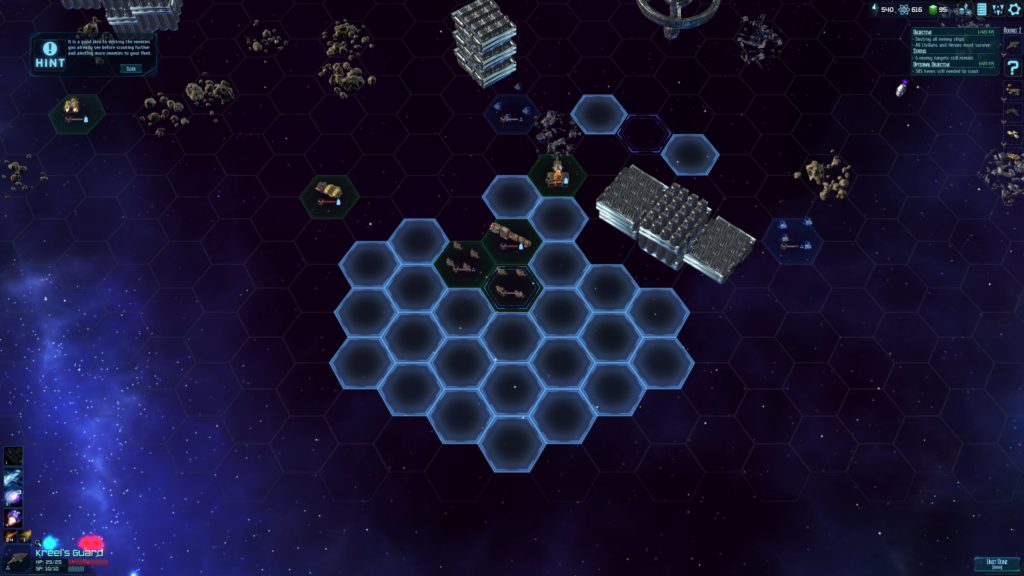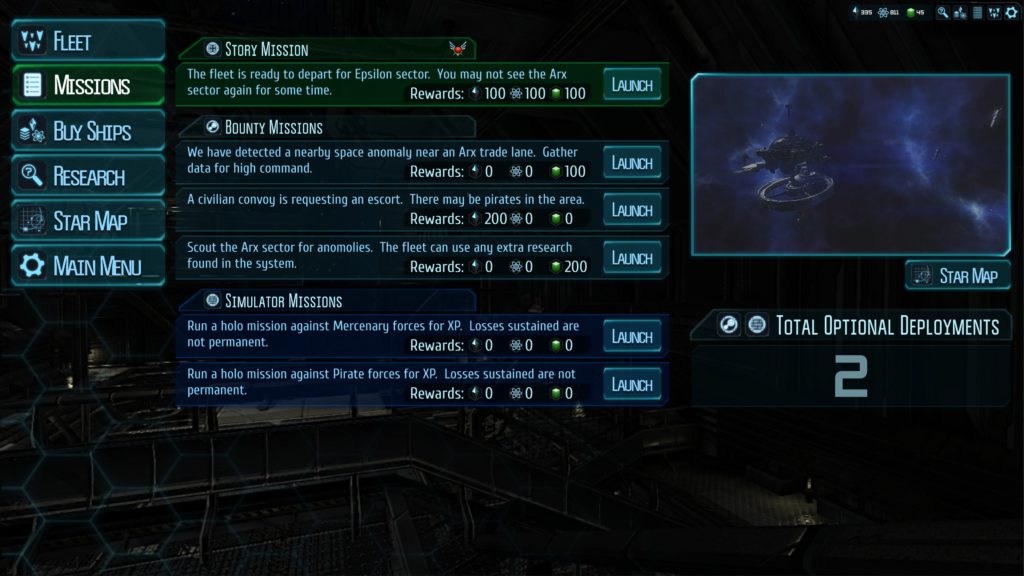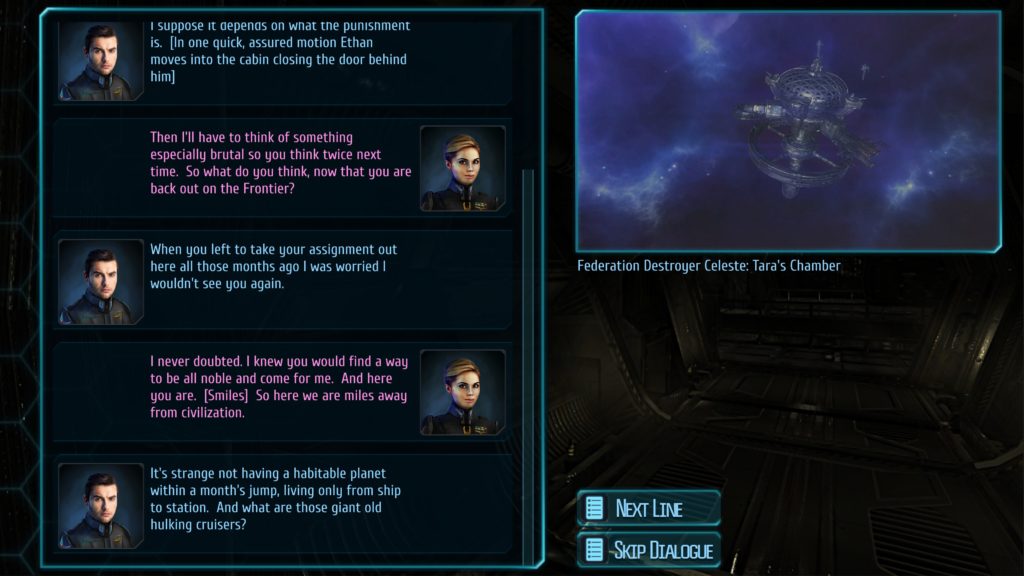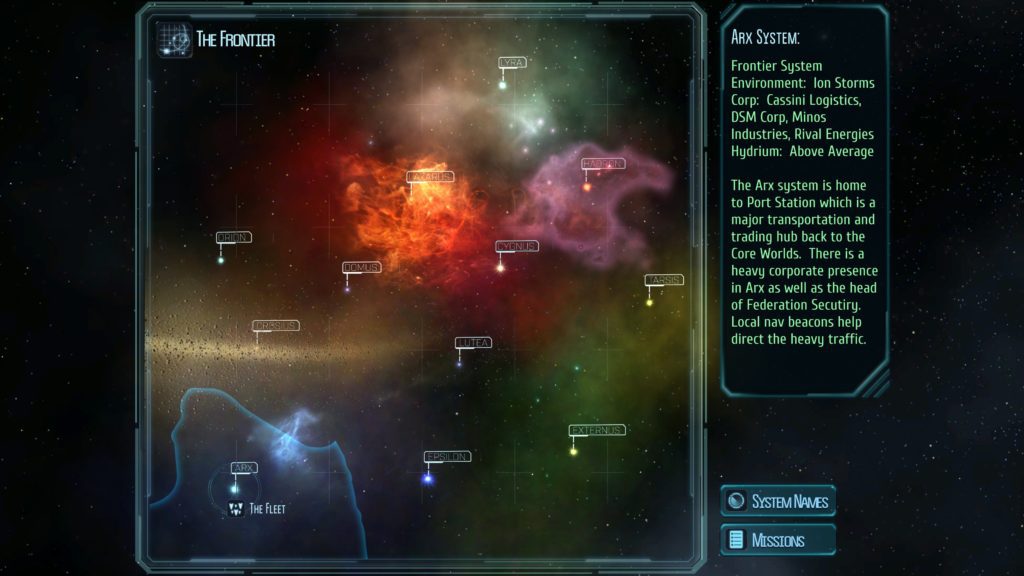[vsw id=”LO5ulBnN5dU” source=”youtube” width=”425″ height=”344″ autoplay=”no”]
- Title: “Ancient Frontier”
- Developer: Fair Weather Studios, LLC
- Publisher: Fair Weather Studios, LLC
- Genre: Sci-Fi Turn-Based Strategy
- Platform: PC (Steam)
- Release Date: September 21, 2017
I’m going to be very honest: turn-based strategy games, while enjoyable, are not my main area of expertise. While I certainly enjoy strategy games from time to time, they just aren’t games that I often gravitate towards and so it’s been a fair bit of time since I’ve delved deeply into one. Perhaps that’s a good thing, though, because in the case of this game it allows me to offer a pretty objective review.
At first, I wasn’t sure what to think of Ancient Frontier. I knew absolutely nothing about it and at first, when hearing the title, I thought this was going to be some sort of medieval fantasy strategy title. Well, it turns out I was quite wrong, though I think this was a very pleasant surprise.
Ancient Frontier is a science-fiction turn-based strategy title from indie developer Fair Weather Studios and is a sequel to their 2016 arcade shooter Bladestar. The game is set sometime in the distant future, long after humans managed to colonize Mars and Earth has since been lost to a catastrophic destruction (the nature of which I’ve yet to discover so far). Humans have colonized many different worlds and star systems by the time the game takes place, though the events focus on a distant region of space known primarily as “the Frontier.” This region lacks any inhabitable planets or moons but is sustained by many different starbases and mining colonies that have come out there to mine its rich mineral and energy deposits. At the offset of their campaign, players will have to choose whether they want to play as an officer in the Federation Navy or as a member of the Alliance with the story and available ships varying considerably.
The core game consists of a cinematic story (with enjoyable voice acting) presented a series of missions that the player will need to complete. Missions are divided into three types: Story, Bounty, and Simulator Missions. Story missions are, of course, the way to progress through the main events of the game. However, between each of the major story missions, you’ll have the opportunity to participate in either Bounties or Simulator runs. Bounties are essentially side-stories where you’ll participate in one of a variety of scenarios with the ability to gain experience and various resources that you’ll need to purchase or upgrade existing ships as well as research new utilities or abilities. Simulator runs will only gain your units (crew) experience points but won’t yield any resources. On the other hand, though, simulator missions don’t present any true risk (units lost during these runs will return during normal play). Bounties, though, will result in permanent loss of any units that get destroyed during them (depending on your chosen difficulty setting).
Each mission will have a different goal in mind but ultimately is presented in a uniform fashion. Players will have their units placed on a large grid that consists of hexagonal spaces. Your movement does, of course, depend on unit type. Some units will only get one move (though they may be able to traverse several spaces at once) while others may get several. The “fog of war” prevents you from seeing too far into the distance at first as well, but this is remedied through mapping out each area. The “fog” is explained as being the limit of your current long-range sensors, so you’re forced to press into an area to map it, reveal hidden resources or anomalies, and discover enemy units. The sensor range, like most other stats of a unit, can be improved with utilities you can research and purchase with resources (or salvage from destroyed enemies).
Overall, success will heavily depend on pacing as in most turn-based titles. Since each unit will get a certain number of turns as well as a certain number of actions (attack or skills), careful planning needs to go into whether you’ll want to go on an all-out assault against an enemy unit or do a hit-and-run type of maneuver (keeping in mind that debris fields and other similar things provide cover during combat). Obstacles also exist that can turn a battle very quickly, such as minefields on some maps that will cause incredible damage to any unit that ends their turn on an adjacent hex space. Optional objectives are present on each map too that will yield additional rewards if they are completed before the main objective.
The game has a fairly high level of difficulty, even if played on the Normal setting. Under normal conditions, units that are destroyed during a mission will be permanently lost, which adds to the immediacy of using effective strategies. Since resources are finite (you only have a certain number of optional deployments you can embark on), suffering too many lost units will eventually leave you with a fleet that won’t be sufficient for advancing the story. Thankfully, if that level of hardcore realism isn’t quite your thing, you can play on an easier setting that will keep the mission difficulty intact while allowing defeated units to return after completion (though any unit defeated in combat won’t gain any experience). This will allow more casual players to be able to enjoy the game without having to feel like they won’t be able to enjoy the story progression due to failed mission attempts.
Visually, the game looks quite nice. Although it typically is viewed from a rather zoomed-out perspective, you can easily rotate the camera and zoom in a decent amount to see the details in the environment and on your (and enemy) ships. As mentioned earlier, the voice-acting in the game is actually quite enjoyable, though I did find that the written dialogue could have used a little more polish (which may be addressed by the time of release). However, one thing I was really impressed with was the game’s soundtrack. There are several memorable tunes (I particularly liked the song that plays in between missions) and I really hope the developer makes the OST available as an optional purchase on Steam.
Overall, if you’re a fan of turn-based strategy titles or if you enjoy a good sci-fi narrative, Ancient Frontier is certainly worth giving a good, hard look. While it may not initially appeal to everyone (especially if you’re not generally into strategy games), I found the game to be very approachable. Once I gave it a chance I easily found myself spending two solid hours in a sitting digging deep into the game, wanting to shore up my fleet and press on in the main campaign to see where the story was going. That, I think, is a solid indicator that a game is a worthwhile investment.
ADDITIONAL SCREENSHOTS (Click for 4K):
A review key was provided by the developer.






